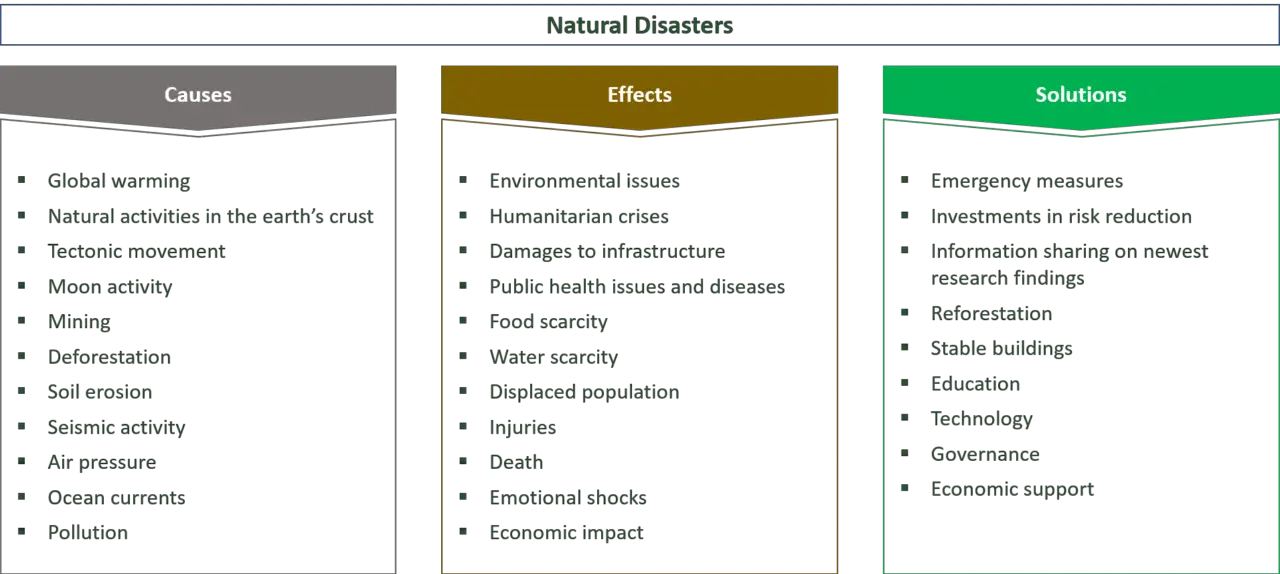Tires have very useful information molded onto their sidewalls. It shows the brand and model name of the tire, its size, whether it is tubeless or tube type, the maximum load and the maximum inflation, safety warning(s), and much more.
Load Index - The load index is a numerical code associated with the maximum load a tire can carry at the speed indicated by its speed symbol under specified service conditions. The load index should not be used independently to determine replacement tire acceptability for load capacity.
Speed Symbol - The speed symbol is also known as a “speed rating.”
P225/60R16 97T – (Passenger Example) Size marking and service description (load index and speed symbol) for a P-Metric speed-rated passenger tire.
LT245/75R16 120/116Q Load Range E – (Light Truck Example) Size marking, service description (load index and speed symbol), and load range for a metric light truck tire. The load range identifies the tire's load and inflation limits.
Max Load 730 kg (1609 lbs) and 240 kPa (35 psi) Max Pressure Cold –(Passenger Example) Indicates maximum load and maximum cold inflation pressure of the tire. Sidewall markings are given in both metric and English Engineering units. Follow tire inflation pressure recommendations on the vehicle’s tire placard, certification label, or in the owner’s manual.
Max Load Single 1380 kg (3042 lbs) at 550 kPa (80 psi) Max Pressure Cold
Max Load Dual 1260 kg (2778 lbs) at 550 kPa (80 psi) Max Pressure Cold – (Light Truck Example) Indicates the maximum load of the tire and corresponding maximum cold inflation pressure for that load when used in a single or dual configuration. Sidewall markings are given in both metric and English Engineering units. Follow tire inflation pressure recommendations on the vehicle’s tire placard, certification label, or in the owner’s manual.
DOT MA L9 ABCD 0309 – The “DOT” symbol certifies the tire manufacturer's compliance with U.S. Department of Transportation (U.S. DOT) tire-safety performance standards. Next to these letters is the tire identification number (TIN) – also known as the tire “serial” number. The first two characters are the factory code indicating where the tire was made. The last four digits are numbers identifying the week and year of manufacture (example: "0309" means the third week of the year 2009). If a tire DOT ends in only three (3) digits, the tire was manufactured before January 2000 and should be removed from service and be scrapped because it is over 10 years old.
Plies/Fabric Information – The ply/fabric information identifies the number of plies and type of cord materials in the tire tread and sidewall areas.
Radial – A tire with a radial construction must show the word “RADIAL” on the sidewall. A radial tire is also indicated by the character “R” in the size designation.
Tubeless – The tire must be marked either "tubeless" or "tube type."
M + S – This mark is commonly found on “all-season” and winter tires. In several formats, the letters "M" and "S" indicate the tire is intended for limited mud and snow service. Other formats include: "MS," "M/S," or "M&S."
Mountain-Snowflake Symbol – This mark is commonly found on winter/snow tires. Tires that meet the RMA definition for passenger and light-truck tires for use in severe snow conditions are marked on at least one sidewall with the letters "M" and "S" (as stated above), plus the mountain-snowflake symbol.
Speed Symbol
The speed symbol, also known as a speed rating, indicates the speed category at which the tire can carry a load corresponding to its load index under specified service conditions. Speed ratings are based on laboratory tests that relate to performance on the road, but are not applicable if tires are underinflated, overloaded, worn out, damaged, or altered.
Although a tire may be speed rated, Mastercraft® Tires does not endorse the operation of any vehicle in an unsafe or unlawful manner. Furthermore, tire speed ratings do not imply that a vehicle can be safely driven at the maximum speed for which the tire is rated, particularly under adverse road and weather conditions or if the vehicle has unusual characteristics.
Your tire’s Tire Identification Number (TIN)
A tire's plant of origin and date of manufacture are located on each tire. These can be determined by examining the series of letters and numbers called the Tire Identification Number (TIN), which follows the letters "DOT" on the tire sidewall
In order to find the week and year of production for tires manufactured after 1999, look at the last four numbers of the TIN. It will identify the week and year in which the tire was manufactured. The first two numbers identify the week, and the last two numbers identify the year of manufacture. Thus, a TIN ending with "3815" indicates that the tire was made during the 38th week of 2015 and would appear as DOTXXXXXXX3815 on the sidewall of the tire.
The Uniform Tire Quality Grading (UTQG)
The Uniform Tire Quality Grading (UTQG) is a system developed by the Department of Transportation that helps consumers compare tires in the areas of treadwear traction and temperature. Here is an example: a tire with a UTQG of 300 AB. The 300 is treadwear, which represents the tire's comparative wear when measured against the government-mandated tire, which is rated at 100. So, this tire wore three times longer than the control tire. Because of variations in operating conditions, the treadwear grade cannot be used to predict actual wear-out mileage; it can be used to predict the relative wear rate of tires with different UTQG wear rates. Traction and temperature are graded A (superior), B (good), or C (average). Traction indicates the level of grip the tire possesses.
Temperature rating deals with the tire’s ability to disperse built-up heat. Heat causes rubber to deteriorate over time, so dispersing heat increases tire life.
Each tire manufacturer determines UTQG ratings for their products.
Temperature
The temperature grades, from highest to lowest, are A, B, and C. These represent the tire's resistance to the generation of heat when tested under controlled conditions on a specified indoor laboratory test wheel. Temperature considerations must be made based on conditions, regional climate ranges, and extreme condition variances.
Traction
Traction grades, from highest to lowest, are AA, A, B, and C. They represent the tire's ability to stop on wet pavement, as measured under controlled conditions on specified government test surfaces of asphalt and concrete.
Treadwear
The treadwear grade is a comparative rating based on the wear rate of the tire when tested under controlled conditions on a specified government test track. A tire graded 200 would wear twice as long on the government test course under specified test conditions, as one graded 100. It is wrong to link treadwear grades with your projected tire mileage. The relative performance of tires depends on the actual conditions of their use and may vary due to driving habits, service practices, differences in road characteristics, and climate.
It is wrong to link treadwear grades with your projected tire mileage. The relative performance of tires depends on the actual conditions of their use and may vary due to driving habits, service practices, differences in road characteristics, and climate.
If you have any questions, please contact your local tire dealer or Mastercraft® Tires at 1-800-854-6288.
The U.S. Department of Transportation (DOT) number stamped on the tire’s sidewall contains a date code that identifies the age of your tires. This DOT number (also called the Tire Identification Number or TIN) is contained in a sequence of up to 12 letters and numbers that signify the tire size, the manufacturer, the specific plant where it was built and when it was built. In the event of a recall, tiremakers and the National Highway Traffic Safety Administration use the DOT number to identify which defective tires are in the campaign. The date code used on tires is not a typical representation used for dates and can be easily missed by the untrained eye.
The date code used on tires is not a typical representation used for dates and can be easily missed by the untrained eye.
To determine the age of your tires, check the last four digits of the U.S.
Tires built from 2000 to the present use the last four-digits of the DOT number to identify the week and year of manufacture. For example, a DOT number with 4116 at the end of the sequence would mean that the tire was manufactured in the 41st week of 2016, or sometime in the mid-October.
While it is increasingly rare to find a tire made before 2000, these tires use only three digits in the date code for the week and year. A tire with a three-digit date code like 416 means that the tire was made in the 41st week of 1996.
Tire DOT Numbers Include a Date Code
(Source: National Highway Traffic Safety Administration)
Be aware that the complete tire DOT number is not required to be molded on both sides of the tire. While some tire makers include the full DOT number on both sides, the date code on your tires may only be contained on one side. If the DOT number is only eight characters, you’ll need to look on the other side of the tire to find the full number with the date code.
If the DOT number is only eight characters, you’ll need to look on the other side of the tire to find the full number with the date code.
Why is it important to understand your tire’s age? Manufacturers have known for decades that exposure to heat and oxygen weakens rubber over time. Today’s tires are highly engineered products, with anti-aging chemicals mixed in the rubber compounds, along with others to make the rubber softer and more flexible. But, over time, the rubber and component materials within the tire changes and becomes more prone to failure. In most instances this loss of strength is invisible – and the material degradation is present regardless of tread depth and even in tires that have never even been put on a vehicle
Aged tires are more susceptible to catastrophic tread separations, which occurs when the tire’s outer layer separates from the tire body or casing. This type of failure can be much more dangerous for drivers to manage than a flat tire or blow out, particularly in trucks, SUVs and vans – particularly 15-passenger vans – because they are more prone to handling and stability problems.
While tread separations caused by manufacturing defects can occur in new tires, tires older than six years – especially those on vehicles located in hot-weather states such as if such as Arizona or Florida – are more prone to suffer a catastrophic tread separation.
According to the National Highway Traffic Safety Administration “Most vehicle owners can easily overlook tire aging, increasing their risk of a crash.”
Based on research showing that the rate of tire failures increases after six years, nearly all vehicle manufacturers recommend owners replace tires after six years, regardless of tread depth. Most tire manufacturers recommend replacement at 10 years or that owners follow the vehicle manufacturer’s guidelines. Tire makers continue to insist that expiration dates are not necessary, yet, nearly all passenger and light truck tire warranties expire at six years. Some tire retailers have also adopted the tire age recommendations and will not service vehicles with tires that are beyond the manufacturers age recommendation.
Consumers should also check the DOT code when buying new replacement tires. Some retailers will sell a “new” tire that has actually been sitting in their inventory for years. That tire could have been improperly stored in a warehouse or outdoors exposed to high temperatures that reduce a tire’s robustness and useful life.
Consumers should insist on replacement tires manufactured within months of the purchase date. And, regardless of tread depth, vehicle owners should replace their tires six years and older.
Call us if you believe a defective tire caused your accident. The team at Newsome Melton can review the facts of your case and determine if we believe you have a valid claim for compensation. If we feel you have a strong defective tire case against the manufacturer, we can navigate the claims process on your behalf and potentially recover compensation to pay for your medical bills, lost wages, vehicle repair or replacement, or other losses.
Call us today at 888-221-5316 or contact us through our online chat. We offer free reviews and handle many of these claims on a contingency fee basis. This means we do not recover compensation unless you do.
iXBT.com projects require cookies and analytics services. By continuing to visit project sites, you agree to our Cookie Policy
I bought my first car over 20 years ago and for some reason didn't think much about the condition of my tires. And only occasionally checked it for the presence of hernias and bumps. But in general, if the wheel does not hit, then it's normal. But just recently, returning from a long trip, I almost got sick when I looked at the condition of my rubber. Although it should still be in excellent condition. Why is it worth monitoring car tires not by the year of manufacture, but by the wear and condition of the rubber. Let's figure it out.
Let's figure it out.
Indeed, the production date of any car tire is quite easy to find out if you look at the side surface. Typically, the date of manufacture will be placed in an oval outline, with the embossed numbers indicating the week and year of manufacture. So, for example, with the numbers 1319 applied, it will be possible to understand that the production date of a car tire is May 2019. And judging by the date of production, they should still be quite working. Unless, of course, they were not operated in extreme conditions on a road surface that did not comply with GOST RF. Although do we have roads according to GOST?
If you accidentally found a three-digit marking on your tire, and it is still found in the vastness of our country, then be sure that this rubber was produced before 2000. It was then that three-digit markings were used. In this case, the last digit denoted the year of production. For example, when marking 039, you can understand that the rubber was made in January 1999 or 1989, how lucky.
But back to more modern tires.
On average, most manufacturers provide a five-year warranty on their products. And this means that the tire should work for at least five years with proper operation and possibly even more. It all depends on storage conditions, speed, braking and road surface, and in addition, of course, on the composition of rubber and fillers.
A car tire should last at least 3-4 years, and only after this period should it show signs of aging. Which include: a lighter color of rubber, the appearance of frame deformation, loss of elasticity of the rubber layer, microcracks and hernia. All this can appear on tires produced recently. And in my opinion it partly depends on the manufacturer and on the transfer of production to other countries. At the same time, they begin to partially move away from the full production technology, adding slightly different components.
All of the above signs point to the early failure of the tire and it is better to replace it.
When buying rubber, of course, you should pay attention to the date of production and indirect signs such as softness, smell, elasticity and color. There is an opinion that if the rubber turns white, this is one of the signs that it is aging, because it is affected by sunlight and temperature changes. In addition to indirect signs, it is worth paying attention to the country of the manufacturer and the company. I do not want to offend the domestic manufacturer, but in this case, the workmanship is not always up to par.
I service my car in a family car service, which means that the technical condition is constantly monitored. All rubber is stored in warm boxes, without direct exposure to sunlight. With the onset of the summer season, summer tires were installed, pressure and general condition were checked. It was concluded that the condition is on a solid 4+, and the mileage of less than 20 km makes itself felt. But returning from a long trip (2500 in one direction), at the next stop, I noticed that the rubber was covered with small cracks, and a "huge" crack appeared on the front wheel.
This condition shocked me, especially considering that the preliminary condition of the rubber was in perfect condition, the year is not old and the mileage is small. Why this happened to a fairly well-known manufacturer of car tires is a mystery to me. Although rummaging through the Internet, I found a couple of references that this incident happened to motorists even after the first year of use and the manufacturer refused a warranty replacement.
And finally, I want to recommend a couple of tips to make your tires feel better even after a few seasons.
- try to store clean tires in plastic bags at room temperature without exposure to sunlight;
- try to avoid prolonged contact with the sun and elevated temperatures;
- check tire pressure and even tread wear. And in the next season, try to swap tires in places for even wear.
Having once again looked at the tires, I had to think about the quality of the production of a foreign manufacturer and whether it is worth choosing a domestic one instead. All excellent road and not a nail not a wand.
All excellent road and not a nail not a wand.
Who will advise on the dimensions 225/65 R17 in terms of quality and price?
In this publication, we will analyze how to properly prepare your home air conditioner for the summer to maintain its performance and protect yourself from dirty air. In this article, we will also analyze...
I needed to choose a kettle in reserve Standard: inexpensive, glass and (very important!) With a scale filter. At the time of purchase Kitfort KT-654-6 was at the intersection of all these requests....
Did you know that there are dark lightnings? Now yes. Dark lightning is a rare and little-studied phenomenon that occurs during thunderstorms. It is now known that this phenomenon has...
We all know that mercury is a liquid metal and was often used in the manufacture of thermometers. And you may have broken it sometime. In this case, small ones spread over the floor...
After the introduction of a new, seemingly convenient possibility of issuing an electronic version of the TCP (vehicle passport), a number of certain difficulties arose, first of all, this was a change . ..
..
The meat grinder is one of the most important helpers in the kitchen. This device is always ready to help, but it requires good care. It often happens that even with high-quality flushing and...
Author: Sochi Avto Remont
Heading: Chassis
How to determine the year of manufacture of a tire? It's no secret that car tires tend to wear out and age, and therefore modern craftsmen advise all car owners to change rubber products on car wheels before their expiration date expires.
As a rule, this shelf life is 5-6 years, in exceptional cases 10 years from the date of manufacture of the tire. Of course, it is better to buy new tires and save yourself from all sorts of trouble. But how to determine the year of manufacture of a tire in order to know, respectively, whether it can be used or not? This will be discussed right now.
So, how to determine the year of manufacture of tires, sequential steps.
The tire year can be identified by a special identification number. The main difference between this number and the vehicle identification number and the identification numbers of other products is that it contains information about the year of manufacture and date of a particular batch of rubber.
So, if you don't know how to determine the year of manufacture of a tire, look at the identification number of the tire. This number must begin with the abbreviation DOT. Following the indicated Latin letters is a special code, usually consisting of 10, and sometimes 11 or even 12 letters and numbers. All these letters and numbers carry specific information about the country where the tires are produced, the size of the tires, the code of the manufacturer itself, plus the week and year of manufacture of the rubber (of a particular batch). According to officially established rules, such a code must be on every tire.
If the car tires were produced after 2000, then you can find out the year of manufacture of the tire by looking at the last four digits of the above number, that is, the identification number. In this case, the first 2 digits of the last 4 will indicate the week of manufacture of the tires, and the last 2 digits will indicate the year of manufacture.
In this case, the first 2 digits of the last 4 will indicate the week of manufacture of the tires, and the last 2 digits will indicate the year of manufacture.
Let's look at an example.
Let's assume that your product has a DOT ID number U7LLLMLR 0300. This would indicate that the tires were manufactured in the third week (03) of 2000 (numbers 00). Accordingly, if the DOT U9 number is indicated on the tireLLLMLR 0204, this would mean that the tires were manufactured in the second week of 2004, and so on.
Remember and know that the identification number on the tire is applied according to the established requirements completely around the entire perimeter of one of the sidewalls of the product, and on the other sidewall there are Latin letters DOT and the first digits of the series (serial number).
If tires were manufactured before 2000, then a slightly different method is used to determine the year of manufacture of such tires, because the tire identification number system takes into account the maximum tire life, which is ten years or more.